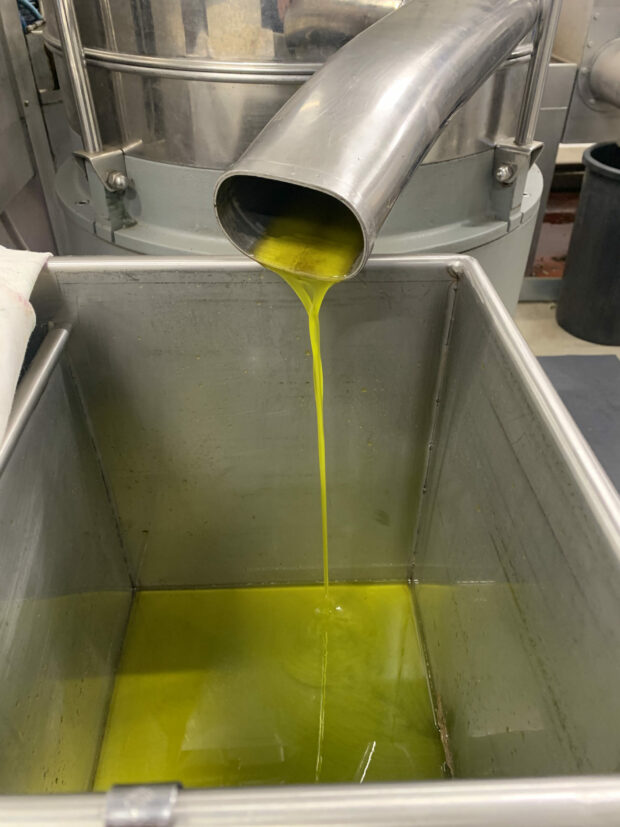
Difference between traditional and cold extraction of olive oil
Olive oil is a mainstay of the Mediterranean diet, prized not only for its distinctive flavor but also for its many beneficial properties. However, not all olive oils are created equal. The extraction method used plays a crucial role in determining the quality, flavor and nutritional properties of the oil. Let’s examine the main differences between traditional and cold extraction of oil.
1. Traditional Method (or Hot Extraction)
Traditionalolive oil extraction is a process that has ancient roots, dating back thousands of years. However, over time, techniques have been refined and adapted to modern production needs. Let’s look in more detail at how hot extraction works and what its peculiarities are.
Detailed process:
a. Grinding of olives
It all starts with the grinding of the olives. Traditionally, this was done through the use of large rotating stones, but today mechanical machinery is often used. This stage turns the olives into a kind of thick paste.
b. Heating of the paste
Once the paste is obtained, it is heated to temperatures that can vary between 30°C and 50°C, although in some cases it can reach higher temperatures. Heating makes it easier to separate the oil from the rest of the paste.
c. Pressing
After heating, the paste is transferred to hydraulic or horizontal centrifugal presses, where it is pressed to extract the oil. The heat facilitates extraction, increasing the amount of oil obtained.
d. Use of solvents
In some variations of the traditional method, especially when trying to obtain maximum yield from olives, chemical solvents, such as hexane, may be used to further extract the oil from the paste residue. Subsequently, these solvents are removed through refining processes.
Impact on quality and flavor:
The use of heat during extraction can cause degradation of some compounds in the oil, such as antioxidants and polyphenols, which are responsible for many of the health benefits associated with olive oil. In addition, high temperatures can alter the oil’s flavor profile, leading to a loss of its freshness and fruity notes.
Production efficiency vs. quality:
Hot extraction definitely offers higher production efficiency, allowing more oil to be extracted than cold methods. This makes the process cost-effective, especially for large yields. However, the quality of the oil can be compromised, as high temperatures and the use of solvents can alter the beneficial and organoleptic properties of the oil.
2. Cold Extraction
Cold extraction is a modern technique that has gained popularity among olive oil producers and consumers for its ability to produce high quality oils while preserving the organoleptic and nutritional characteristics of the oil.
Detailed process:
a. Grinding of olives
Similar to traditional extraction, cold extraction begins with grinding the olives. This step aims to create a homogeneous paste. Although mechanical techniques predominate, the goal is to minimize exposure of the paste to air, thus reducing oxidation.
b. Malaxation
The resulting paste then undergoes a process called malaxation, in which it is slowly stirred in special tanks. This allows the small drops of oil to aggregate and form larger drops, facilitating extraction. During this stage, the temperature is tightly controlled to remain below 27°C.
c. Centrifugation
Instead of traditional pressing, a decanter centrifuge is often used in the cold pressing technique to separate the oil from the paste. The centrifuge uses centrifugal force to separate the oil from the other solid and liquid parts of the olives.
d. Filtration
After centrifugation, the oil may still contain small particles and residual water. To purify it, the oil can be filtered through cartons or other filtration systems.
Impact on quality and flavor:
The main advantage of cold extraction is the preservation of the beneficial and organoleptic properties of olive oil. Because the process takes place at low temperatures, there is less risk of thermal degradation of heat-sensitive compounds in the oil, such as polyphenols and vitamin E. This results in an oil with a fresher, fruitier flavor and often with notes of bitterness and spiciness, which are indicators of high antioxidant content.
Yield vs. quality:
Although cold extraction can result in a slightly lower yield than hot extraction, the superior quality of the oil produced often justifies this difference. Oil obtained through cold extraction is prized for its rich and complex profile, so much so that many consumers are willing to pay a premium price for it.
Conclusion
The decision between traditionally and cold-pressed oil depends largely on individual preferences and intended use. Cold extractedoil is generally considered superior in terms of flavor, aroma and health benefits, but it can also be more expensive due to the lower yield of the extraction process.
On the other hand, while traditional extraction offers a higher yield, it can compromise the quality and purity of the oil after theolives are harvested. Regardless of the extraction method, it is always important to look for high-quality olive oils and store them properly to preserve their flavor and beneficial properties.

